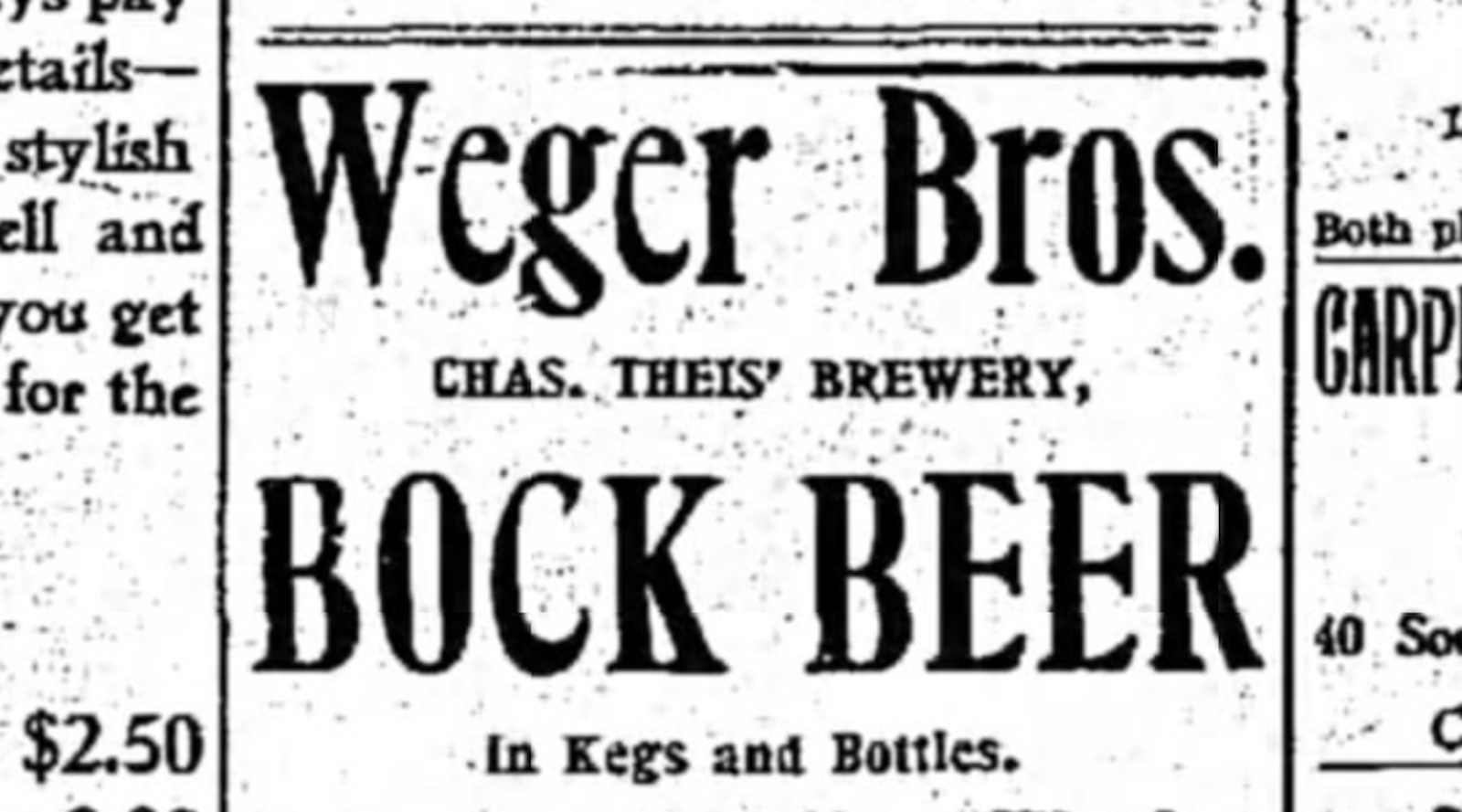Based on notes taken by Paul Kaiser, who brewed at Weger Brothers in Philadelphia, here is a recipe for a bock lager in the early 20th-century American fashion.
This recipe follows a traditional “double mash” schedule, i.e., a cereal mash alongside an infusion mash. (For more on this technique, see “Cereal Mashup,” beerandbrewing.com.) Per Kaiser’s notes, the cereal mash includes the darker malts. Also see the Brewer’s Notes for a simpler version.
For more about American lager brewing in the late 19th and early 20th centuries, see America’s Founding Lagers: The Pre-Prohibition Landscape.
ALL-GRAIN
Batch size: 5 gallons (19 liters)
Brewhouse efficiency: 72%
OG: 1.048
FG: 1.012
IBUs: 24
ABV: 4.7%
MALT/GRAIN BILL
4.2 lb (1.9 kg) six-row pale
3.3 lb (1.5 kg) corn grits
15 oz (425 g) flaked wheat
10 oz (283 g) caramel 60L
2 oz (57 g) Carafa III
HOPS SCHEDULE
0.55 oz (16 g) Cluster at 90 minutes [15 IBUs]
0.4 oz (11 g) Hallertauer Mittelfrüh at 60 minutes [6 IBUs]
0.3 oz (9 g) Hallertauer Mittelfrüh at 30 minutes [3 IBUs]
YEAST
Fermentis SafLager W-34/70 or other favored lager strain
DIRECTIONS
Mill the grains, keeping the caramel and Carafa III malt separate from the pale. Conduct a cereal mash: Combine the grits and caramel and Carafa III malts, mash in at about 152°F (67°C), and rest 15 minutes (this is a good time to start the infusion mash); then bring the cereal mash to a boil, and boil for 30 minutes. For the infusion mash: Combine the six-row and flaked wheat and mash those in at 145°F (63°C) and hold there. After boiling the cereal mash, combine the two mashes to bring the temperature of the total mash to about 160°F (71°C)—add boiling water, if necessary, to raise the temperature, but don’t worry if you overshoot the temperature. Vorlauf until the runnings are clear, then run off into the kettle. Sparge and lauter as necessary to obtain 6.5 gallons (25 liters) of wort—or more, depending on your evaporation rate. Boil 90 minutes, adding hops according to the schedule. Chill to about 48°F (9°C), aerate well, and pitch plenty of healthy yeast. Ferment at about 50°F (10°C) for about 2 weeks, or until terminal gravity is reached. When it nearly reaches terminal gravity, raise the temperature to 57°F (14°C) for 1 day for a diacetyl rest. Then cool by about 2°F (1°C) per day until you reach lagering temperature, about 32°F (0°C). Lager for 4–6 weeks, then package and carbonate.
BREWER’S NOTES
About that grain bill: You could use flaked maize instead of corn grits and thus skip the cereal mash. In that case, you could try a traditional step mash (see “Short and High: The Hochkurz Mash,” beerandbrewing.com) or keep it simple with a single infusion mash at about 150°F (66°C) for an hour. You can also substitute two-row malt for six-row, though the latter was more typical at that time. The Carafa III is an available substitute for what was then called “porter malt,” but it may be possible to source something like the latter from a boutique maltster.
Hops: Kaiser’s recipe called for an addition of California hops and two additions of imported hops. Our educated guesses should get you close, but feel free to improvise with other varieties. We also think it would be fun to dry hop this beer.

